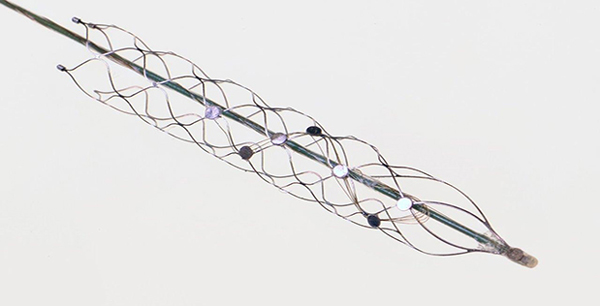 What do you get when you cross a stent with a bunch of electrodes? It is a “stentrode,” a minimally invasive brain implant made from off-the-shelf components to help patients with physical disabilities and neurological disorders to move their limbs.
What do you get when you cross a stent with a bunch of electrodes? It is a “stentrode,” a minimally invasive brain implant made from off-the-shelf components to help patients with physical disabilities and neurological disorders to move their limbs.
The size of a paper clip, the stentrode is the latest installment in DARPA-funded efforts to create a brain-computer interface, according to a statement from the agency. Placing it in the brain via the circulatory system alleviates the need for craniotomy and breaching the blood‒brain barrier.
Researchers at the University of Melbourne’s (Australia) vascular bionics laboratory added electrodes to off-the-shelf stents and threaded them through blood vessels into the motor cortexes brains of sheep. Once implanted, the electrodes could detect electrical signals generated by upper-motor neurons in the brain that indicate information about movement, the agency said.
The devices worked in freely moving sheep for 190 days, hinting at the possibility for safe, long-term use. The researchers made the devices flexible enough to safely pass through curving blood vessels, yet stiff enough to deliver the electrode array within the brain.
“By reducing the need for invasive surgery, the stentrode may pave the way for more practical implementations of those kinds of life-changing applications of brain-machine interfaces,” said Doug Weber, program manager for DARPA’sReliable Neural‒Interface Technology (RE‒NET) program.
An article about the work appeared in the journal Nature Biotechnology.
Read More – Source: How to Turn Stents Into Brain-Computer Interfaces | Qmed
by: Nancy Crotti